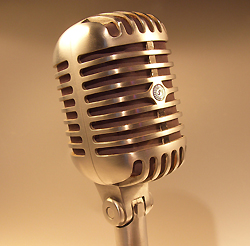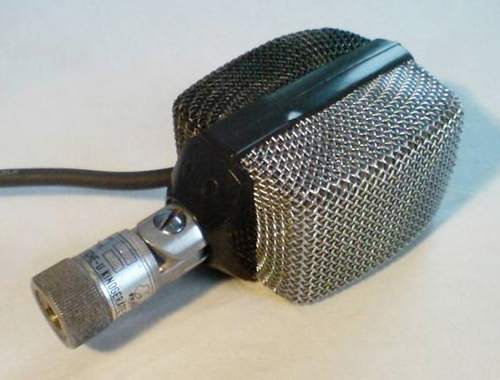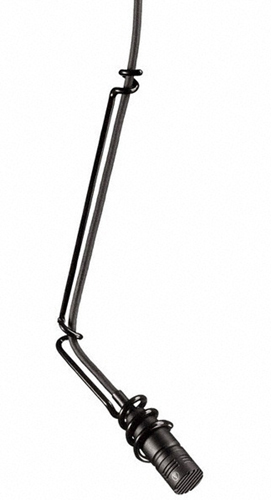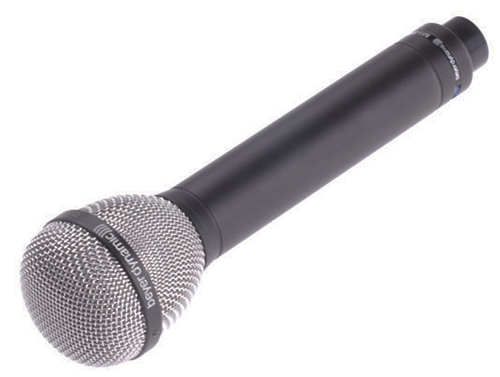
Next door in Austria in 1947, Dr. Rudolf Görike and Ernst Pless started AKG, supplying movie equipment to theaters in post World War II Vienna.
Just a few short years later, AKG had introduced new mic technologies that include an early (and perhaps the first) high-quality condenser, the first remote-controlled multi-pattern capacitor mic, and one of the first dynamic cardioid models.
The D12 was highly coveted by sound engineers for its great sound and cardioid characteristics, and 1971 saw the introduction of the 414 series, a large diaphragm condenser with multiple variable pickup patterns that is still a staple of studio and stage work.
Shure stepped up again in 1959 with Unidyne III, the first high-quality unidirectional design that is used by speaking into the end rather than the side of the microphone.
It was the predecessor to the SM57 and paved the way for modern handheld designs.
By the mid-1960s, the SM58 (for “studio microphone”—bet you didn’t know that!) launched, delivering a combination of sound quality and rugged reliability that’s made it the standard for live vocal use to this day.
Hideo Matsushita founded Audio-Technica Corporation in Tokyo in 1962 and since that time the company has developed a wide range of designs. My favorite comes from 1985 with the UniPoint Series of ultra-compact condenser mics.
Over the years the line has grown to include more than 30 models, including hanging, boundary, gooseneck and even handheld microphones.
The UniPoint Series continues going strong as a contractor and sound operator favorite.
About the same time, beyerdynamic introduced the M88, incorporating a new low-mass diaphragm element that offered fast transient response coupled with the ability to handle high SPL levels. It caught on with engineers around the world, and a version of the M88 is still a current item in the catalog more than 50 years later.
In 1964, Bell Labs received a patent for the electroacoustic transducer, an electret microphone. Electret condensers offered greater reliability, higher precision, lower cost, and a smaller size that anything available at the time.
During this period, AKG launched the world’s first 2-way cardioid microphones. One of these was the D202, a handheld model that with two diaphragms, one for the lows (20 Hz – 800 Hz) and a second one for the highs (800 Hz – 20 kHz).
The mic sported a sintered bronze grill on the front, rear ports at the cable end and a 3-position bass cut switch. Another model, the D202ES, moved the crossover point to 500 Hz.




